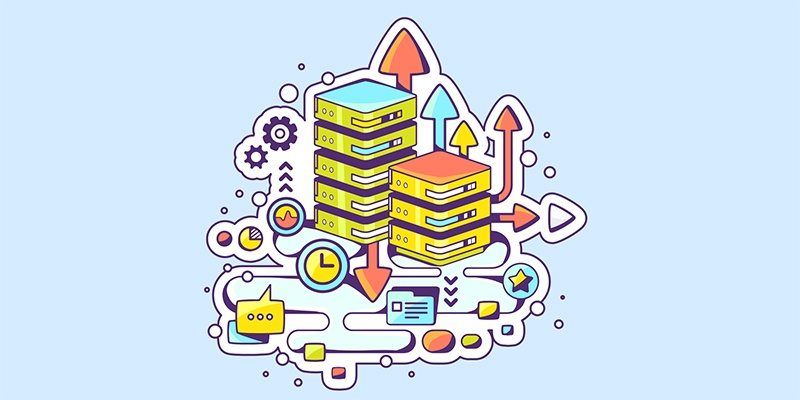If all or part of your infrastructure is in the cloud, you need to monitor it. This article describes the what and how of cloud monitoring.
Pretty much every business is using the cloud in some form these days. In fact, 93 percent of businesses say they use cloud services, and many anticipate investing in it more.
According to 451 Research, enterprises were expected to spend about 26% more on cloud services in 2018, which outpaces spending increases on overall IT. And it makes sense: the cloud provides unparalleled business advantages such as scalability and agility. But with increased cloud usage comes a greater need to monitor performance.
That’s where cloud monitoring comes in. You can’t afford to have delayed web application response times, under-resourced workloads, downtime, or data breaches. Cloud monitoring helps you observe response times, availability, resource consumption levels, performance, as well as predict potential issues.
What is Cloud Monitoring?
Cloud monitoring is the process of reviewing and managing the operational workflow and processes within a cloud infrastructure or asset. It’s generally implemented through automated monitoring software that gives central access and control over the cloud infrastructure.
Admins can review the operational status and health of cloud servers and components.
Concerns arise based on the type of cloud structure you have, and your strategy for using it. If you’re using a public cloud service, you tend to have limited control and visibility for managing and monitoring the infrastructure. A private cloud, which most large organizations use, provides the internal IT department more control and flexibility, with added consumption benefits.
Regardless of the type of cloud structure your company uses, monitoring is critical to performance and security.
How Cloud Monitoring Works
The cloud has many moving parts, and it’s important to ensure everything works together seamlessly to optimize performance. Cloud monitoring primarily includes functions such as:
- Website monitoring: Tracking the processes, traffic, availability and resource utilization of cloud-hosted websites
- Virtual machine monitoring: Monitoring the virtualization infrastructure and individual virtual machines
- Database monitoring: Monitoring processes, queries, availability, and consumption of cloud database resources
- Virtual network monitoring: Monitoring virtual network resources, devices, connections, and performance
- Cloud storage monitoring: Monitoring storage resources and their processes provisioned to virtual machines, services, databases, and applications
Cloud Monitoring Capabilities
Cloud monitoring makes it easier to identify patterns and discover potential security risks in the infrastructure. Some key capabilities of cloud monitoring include:
- Ability to monitor large volumes of cloud data across many distributed locations
- Gain visibility into application, user, and file behavior to identify potential attacks or compromises
- Continuous monitoring to ensure new and modified files are scanned in real time
- Auditing and reporting capabilities to manage security compliance
- Integrating monitoring tools with a range of cloud service providers
Monitoring Private, Public, and Hybrid Clouds
Cloud monitoring is easier if you operate in a private cloud for reasons we mentioned earlier (control and visibility), as you have access to the systems and software stack. Though monitoring can be more difficult in public or hybrid clouds, application performance monitoring tools (APM) give you visibility into performance behaviors.
A hybrid cloud environment presents unique challenges because data resides in both the private and public cloud. Limitations due to security and compliance can create issues for users accessing data. Admins can solve performance issues by determining what data to store in which cloud as well as what data to asynchronously update. Database synchronization can be a challenge as well, but sharding—partitioning data into smaller, faster and more easily managed parts—helps reduce issues.
Though private cloud gives you more control, you still need to monitor workloads to ensure optimum performance. Without a clear picture of workload and network performance, you can’t justify configuration or architectural changes or quantify the effectiveness of quality of service implementations or other technologies.
APM tools are helpful in private cloud environments as well, as they work hand-in-hand with existing data monitoring and management and can track performance, report results, and alert you to possible service disruptions.
Best Practices for Cloud Monitoring
Ensuring optimized performance and minimizing downtime is important to cloud monitoring. Here some ways to proactively manage the cloud and avoid common issues:
Data Security
Security is crucial in the cloud so gaining strict control over data at all endpoints helps mitigate risks. Solutions that scan, analyze, and take action on data before it leaves the network help protect against data loss. It’s also important to scan, evaluate, and classify data before it’s downloaded to the network to avoid malware and data breaches.
APIs
The cloud can have an array of performance issues from poorly designed APIs. You can avoid poor cloud API performance by using APIs that operate via objects instead of operations. This results in fewer individual API calls and less traffic. APIs with consistent designs and few data type restrictions result in better performance.
Application Workflow
An application’s response time and supporting resources are vital to understanding what’s hindering performance. Following an application’s workflow helps you identify where and when delays occur.
Allocating Cloud Servers and Storage
Overprovisioning cloud services—also known as cloud sprawl—eats up resources, availability and can impede performance. APM tools can help you find the issues, then proper policies and procedures can help mitigate sprawl and pull back resource and network use when necessary.
Monitoring the cloud requires tools that track performance, consumption, and availability while ensuring the secure transfer of data. A proper solution and management enables companies to find a balance between mitigating risks while leveraging the benefits of the cloud.
Related content
Cloud Monitoring Software & Tool
Cloud Monitoring Best Practices You Need to Adopt
